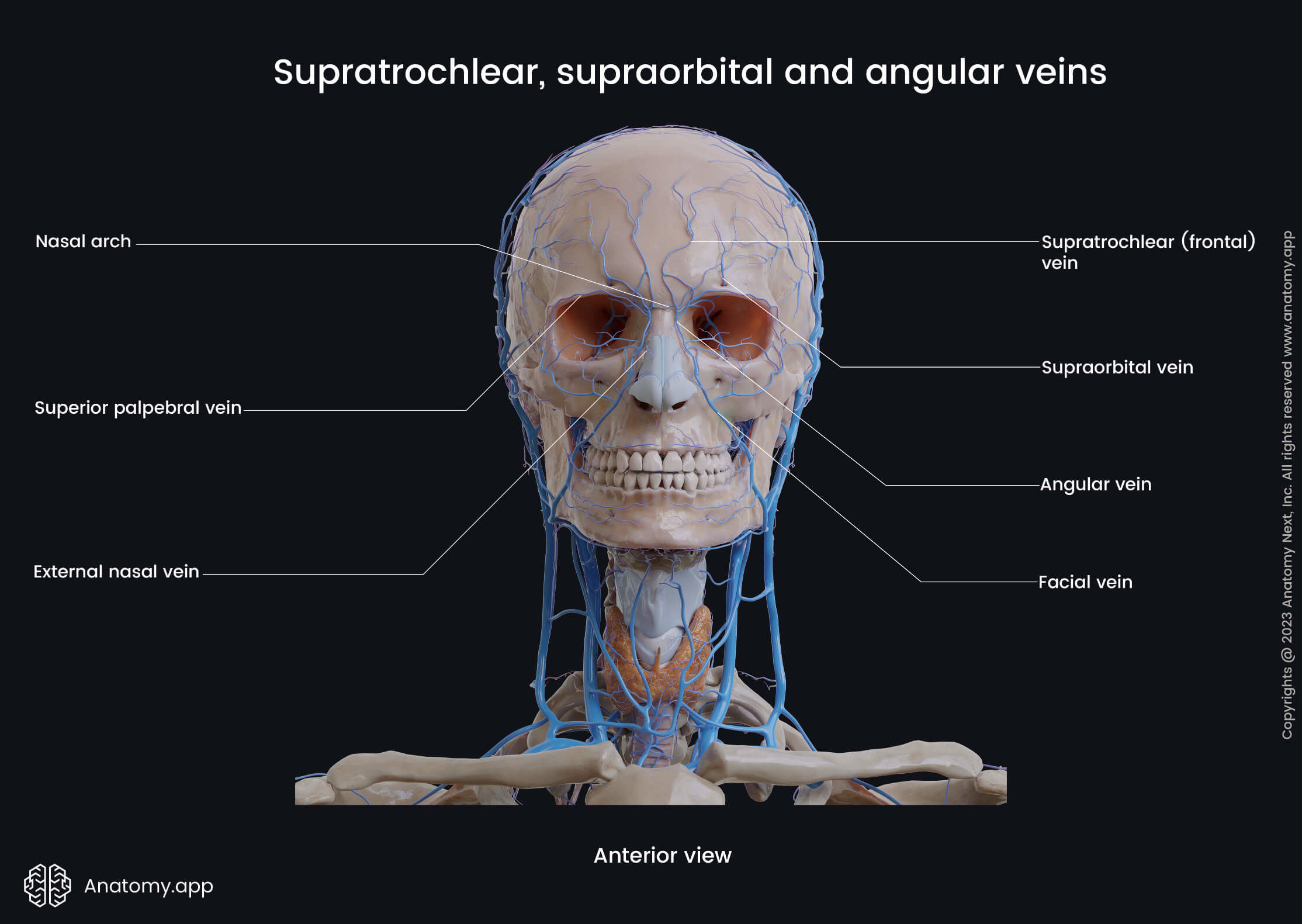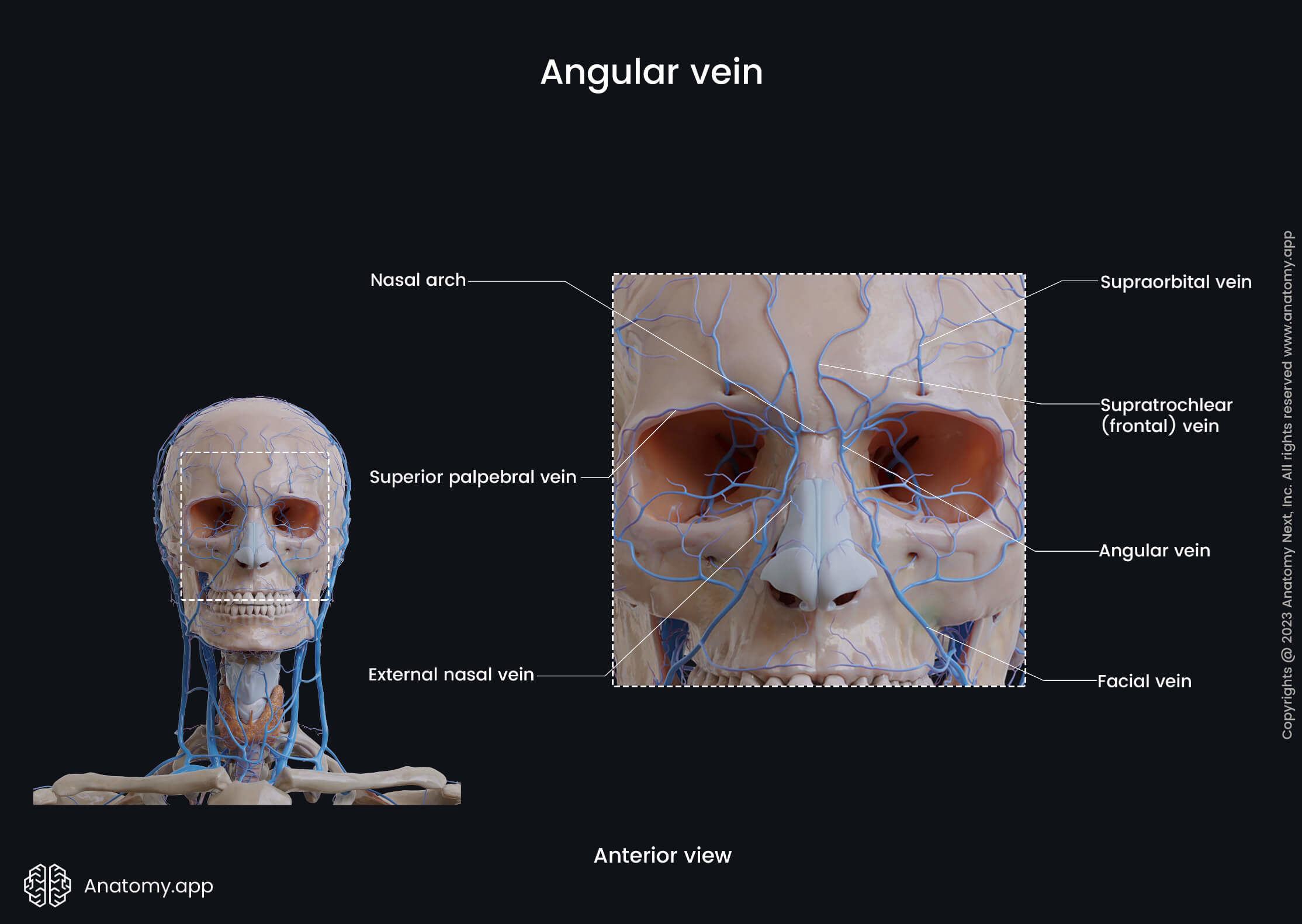- Anatomical terminology
- Skeletal system
- Joints
- Muscles
- Heart
- Blood vessels
- Blood vessels of systemic circulation
- Aorta
- Blood vessels of head and neck
- Arteries of head and neck
- Veins of head and neck
- Veins of head
- Extracranial veins
- Intracranial veins
- Veins of neck
- Veins of head
- Blood vessels of upper limb
- Blood vessels of thorax
- Blood vessels of abdomen
- Blood vessels of pelvis and lower limb
- Blood vessels of systemic circulation
- Lymphatic system
- Nervous system
- Respiratory system
- Digestive system
- Urinary system
- Female reproductive system
- Male reproductive system
- Endocrine glands
- Eye
- Ear
Angular vein
The angular vein (Latin: vena angularis) is a blood vessel formed by the union of supratrochlear and supraorbital veins that becomes the facial vein. The angular vein drains the anterior aspect of the scalp and other regions in the upper part of the face.
The angular vein begins from the medial angle of the eye as the supratrochlear and supraorbital veins that descend from the anterior part of the scalp fuse together. The angular vein descends along the lateral surface of the nose, passes beneath the zygomaticus major. Below the infraorbital margin, it continues as the facial vein.
The main tributaries of the angular vein are the external nasal veins that drain the nose, and the inferior and superior palpebral veins, which drain the lower and upper eyelids, respectively.

